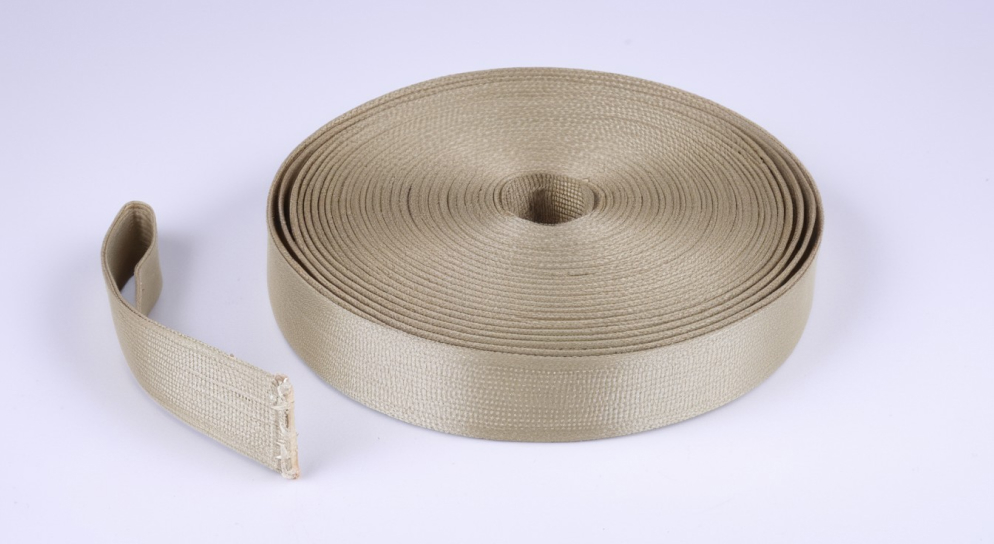Crane slings are an essential component of heavy-lifting operations. It provides the connection between the crane hook and the load.
High-quality webbing is crucial for slings, affecting their strength, durability, and safety. Here’s a comprehensive guide to help you choose the right crane sling with the best webbing materials for your specific lifting needs.
Understanding the Importance of High-Quality Webbing
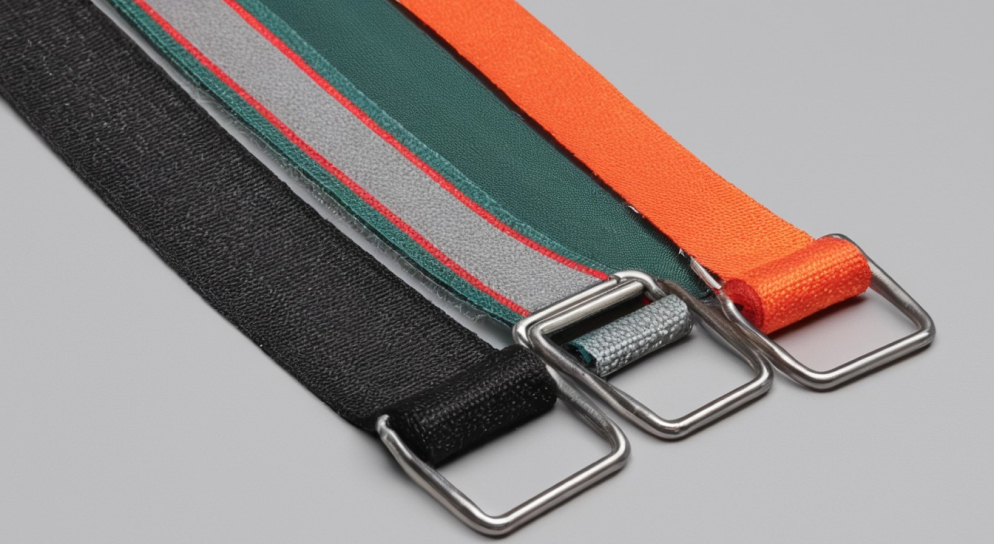
Before diving into specifics, let’s understand why webbing quality is non-negotiable. The webbing is the strap part of the sling and comes into direct contact with the load.
It must be strong to bear the weight, resistant to abrasions and tears, and durable to withstand the rigors of heavy lifting. Choosing the right webbing material ensures that your crane lifting sling is dependable. This also acts as a great source to prevent accidents.
Determining the Right Webbing Material
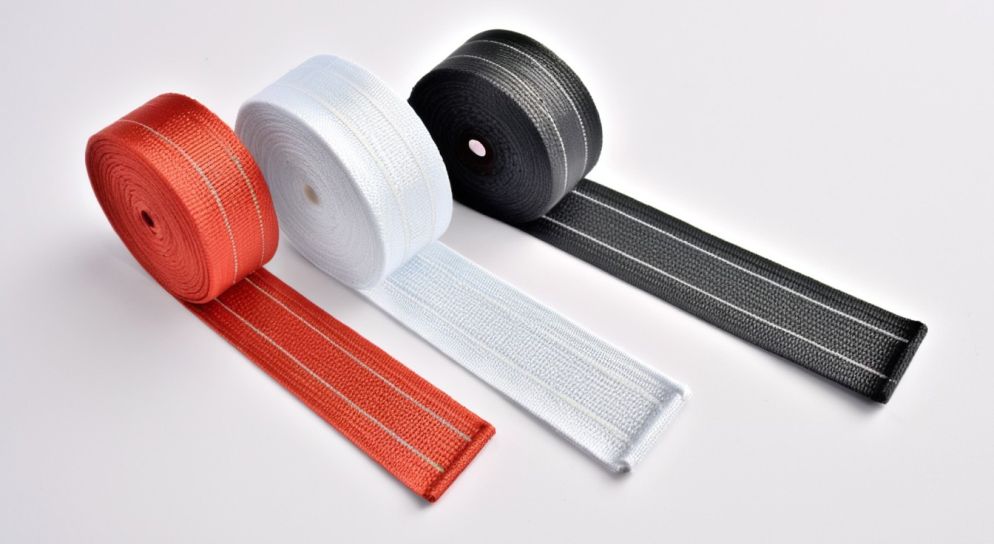
Various materials are used in crane sling webbing, each with advantages and suitable applications.
Polyester Webbing
High tensile strength, making it suitable for heavy loads. Excellent abrasion resistance, which prolongs the life of the sling. Resists most chemicals, enhancing its versatility.
Inexpensive and available. It is ideal for general-purpose lifting and heavy-duty applications.
Nylon Webbing
High elongation, making it more forgiving under shock or jerking loads. It’s good but less durable than polyester. Remains flexible even at low temperatures.
Dyneema Webbing
Dyneema webbing is the world’s strongest fiber because of its exceptional strength-to-weight ratio. It’s crafted from Ultra-High Molecular Weight Polyethylene (UHMWPE). This ensures superior tensile strength at a fraction of the weight of other materials.
Ensuring Compliance with Industry Standards
Ensuring they meet or exceed industry standards and regulations, such as ANSI, ASME, OSHA, and CEN, is imperative. Compliant slings have been tested and approved for safe lifting practices and durability.
They are labeled with the greatest weight the sling can handle. Clear identification of the manufacturer and the material used.
Factors to Consider Beyond Webbing
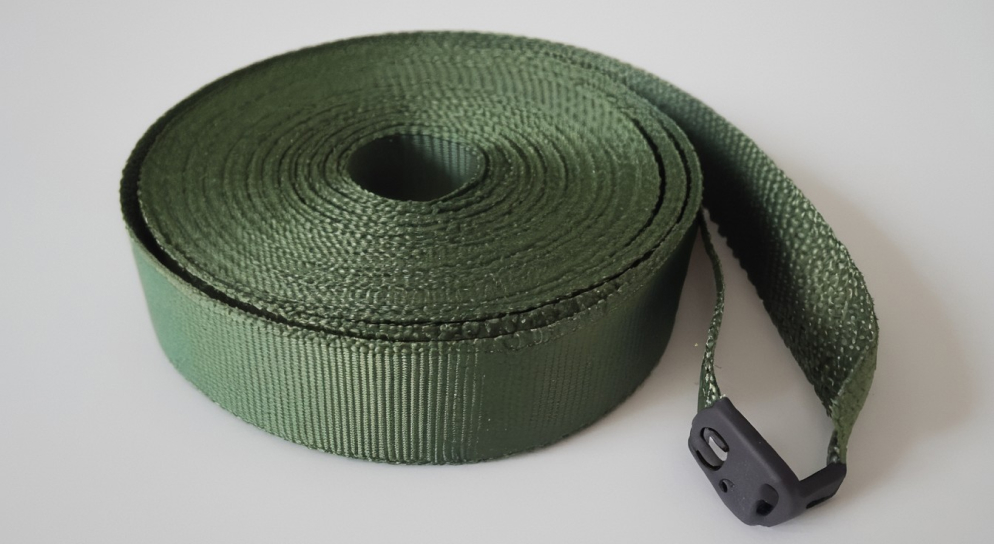
While webbing is a critical component, it’s not the only one to consider when choosing the right crane sling. Other factors to keep in mind include:
Sling Length and Width
Match the length and width to the size and shape of the load to ensure proper weight distribution. Also, consider the height at which the load will be lifted to determine the necessary sling length.
Sling Type
Choose between single-leg or multi-leg slings depending on the shape and weight of your load. Multi-leg slings provide better stability for shaped loads.
End Fittings
Select appropriate end fittings, such as sling hooks, and ensure they are compatible with your lifting equipment. Different end fittings have varying load capacities and are suitable for other applications.
Weather and Environment
Consider the temperature, moisture, and any hazards in the lifting environment. This could affect the sling’s performance. For example, polyester webbing is more suitable for wet environments than nylon.
Maintenance and Inspection Protocols
Even the highest quality slings must need regular maintenance and inspection. This is to ensure safety and longevity. Implementing a set protocol for care and use is vital to safeguard against unforeseen risks.
Check for cuts, abrasions, and any signs of wear before each use. Keep slings clean to avoid deterioration of the material.
How to Choose the Right Synthetic Sling for Your Application
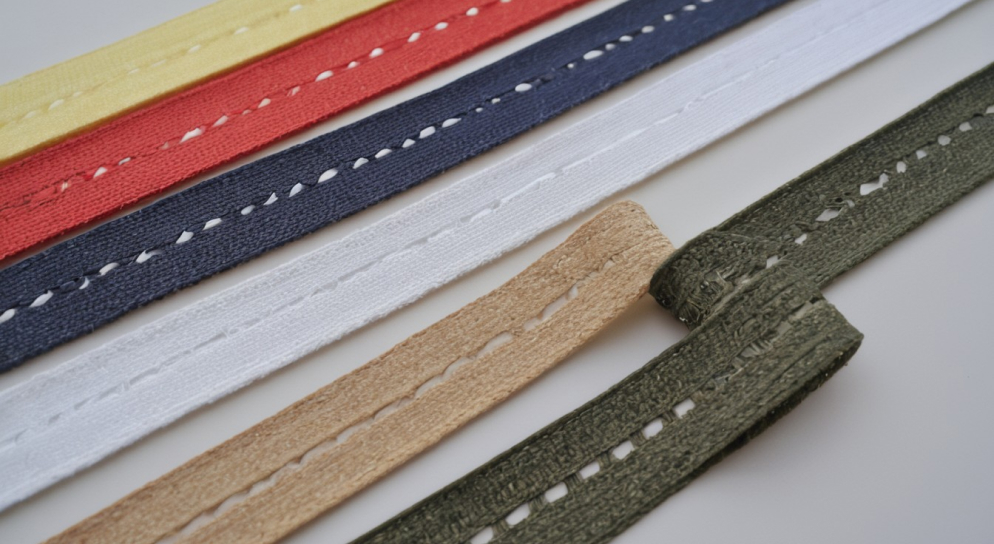
Web slings are now a crucial component for lifting and moving objects. Hoists, cranes, and powered industrial trucks move with the help of these web slings.
But there are different types of synthetic slings tailored according to your needs. Making the right choice and knowing the stratification between each string is crucial. Let’s see what they are used for:
Flat Web Slings – Flat web slings are cheap, easy-to-handle lifting attachments built of high-tenacity polyester webbing that gives a superb grip on all loads. They are sturdy, lightweight, acid and bleaching-resistant, and capable of absorbing large shocks. Flat web slings do not conduct electricity.
Round Slings – Round slings are comprised of very durable polyester webbing and are color-coded to make it easy for users to recognize the rated capacity. These slings allow you to lift and secure hefty loads safely. Round slings can also be used to hoist loads with irregular shapes. Furthermore, spherical slings are long-lasting and inexpensive.
Tips for Using Synthetic Slings
Before selecting a synthetic sling for your desired use, consider its chemical and physical features and the following guidelines.
Stay within the working load limit. Every sling has a rated capacity or working load limit that should not be exceeded for lifting or moving things.
Stick to low heat resistance. Most of these slings have insufficient heat resistance, causing them to fail in high-temperature situations. Use high-heat-resistant synthetic slings designed for such conditions if you work in a high-heat setting.
Avoid prolonged UV exposure—long exposure to UV radiation damages synthetic slings. Keep your synthetic slings cold, dark, and dry.
Always do a visual inspection. Make it a routine to inspect each sling for visible damage, such as abrasions and cuts, before usage. This behavior promotes safety when in use.
Use edge guards. Even though synthetic slings are cut and abrasion-resistant, you should exercise caution by utilizing edge guards and corner protectors as needed.
Synthetic slings offer multiple beneficial characteristics that make them fit for the majority of hoisting, lifting, and rigging applications across industries. Following accurate instructions will allow you to get the most out of these vital lifting equipment.
Wrapping Up…Choose the Best Crane Slings
The importance of reliable, high-quality crane slings cannot be overstated. Knowing the different types of webbing materials and their applications will assist you in selecting the perfect crane sling for your lifting needs.
Always ensure compliance with safety standards and install stringent maintenance and inspection practices. This extends the life of your slings and keeps your lifting operations safe.
For more helpful tips, check out the rest of our site today!
Read Also:

















